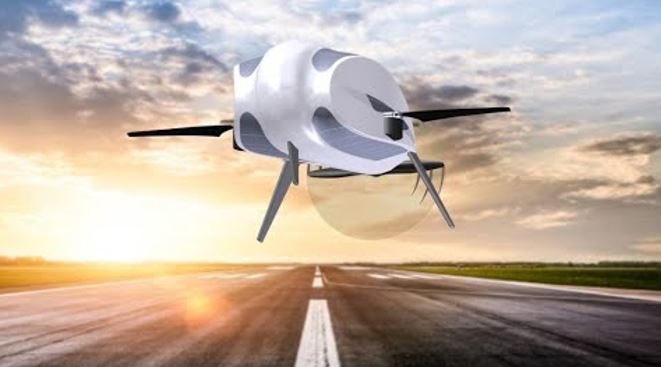
Blainjett Aviation, an aerodynamic propulsion technology startup, has announced that initial testing of its hemi-rotor aerodynamic concept has confirmed its potential to deliver faster, more efficient performance in VTOL aircraft. “Subscale tests demonstrated the novel configuration’s net positive lift and low drag through the ascent/hover, cruise and descent/hover phases of flight” the company says.
“If our lab testing continues on its current trajectory,” Cary Zachary, the company’s President says, “we believe our [hemi-rotor configured] prototype will boast the most efficient hover and forward flight profile of any rotor-borne VTOL aircraft.”
In a press release the company reports “Blainjett is applying the hemi-rotor concept to a subscale drone as part of a path to demonstrating that the configuration can scale to larger unmanned or manned aircraft in eVTOL applications from package delivery and cargo to transport and tactical military roles.
“Cary Zachary, discovered the configuration while evaluating a series of digital models pairing rotor designs with an electric powertrain for Horizon Aeronautics 9-foot long, four-foot wide “Hoverbike,” a proposed short distance commuter vehicle.
“Blainjett’s “hemi-rotor” design situates familiar vertical lift rotors (as seen on helicopters, UAM or drone aircraft) partially inside opposite sides of an enclosed fuselage. The airfoil-shaped fuselage also houses a pair of electric motors to drive the lift-rotors. A third motor situated in the empennage above an inverted V-tail powers a pusher prop.
“The concept hinges on isolating the retreating rotor blades from the advancing blades, in effect neutralizing the retreating rotors. In a hover, conventional open-rotors generate an even amount of lift all the way around. But when a traditional rotorcraft flies forward, its rotor blades both advance forward into the relative wind and retreat from it during rotation. This yields a dissymmetry of lift on opposing sides of the rotor arc, eventually creating a hard speed limit.
“Blainjett solves the problem by enclosing the inner half of each rotor disc within the aircraft fuselage. The fuselage incorporates an inner “hover door” and a series of top and bottom vents to facilitate pitch and yaw control (and relieve internal aerodynamic pressure) while in hover. Roll control is affected by power inputs to the mid-fuselage lift-rotors.”
As V2 testing of the hemi-drone prototype moves forward, Blainjett says it is seeking potential manufacturing partners to help scale the concept and validate design IP.
For more information
(Imge: Blainjett)

